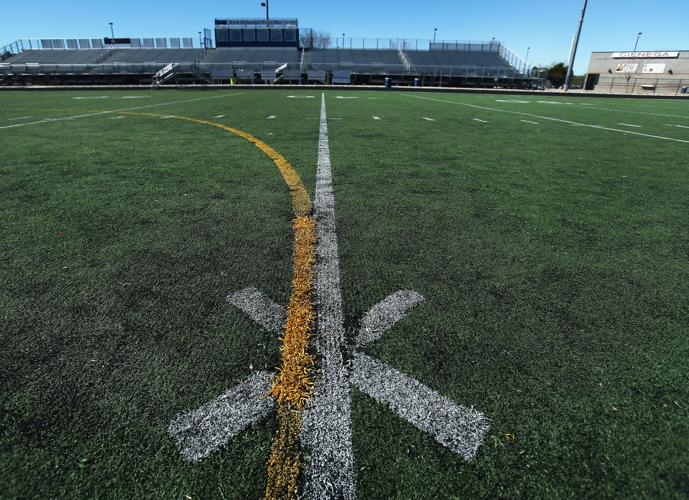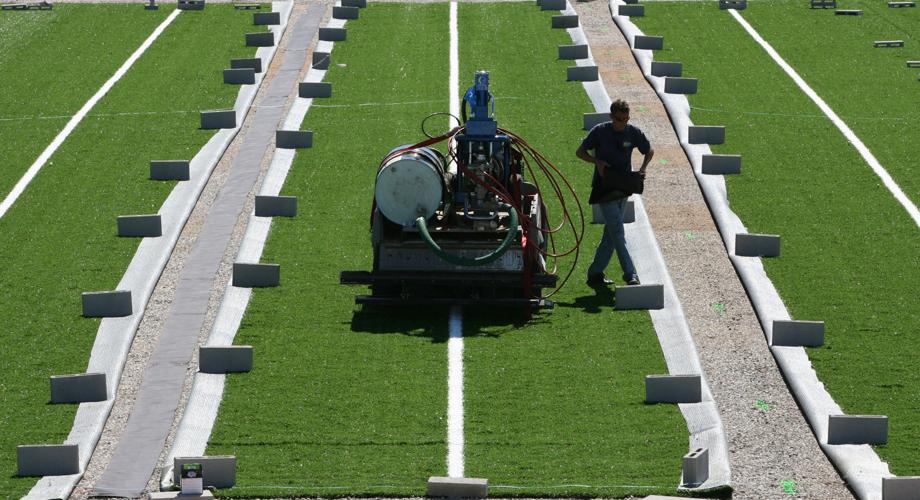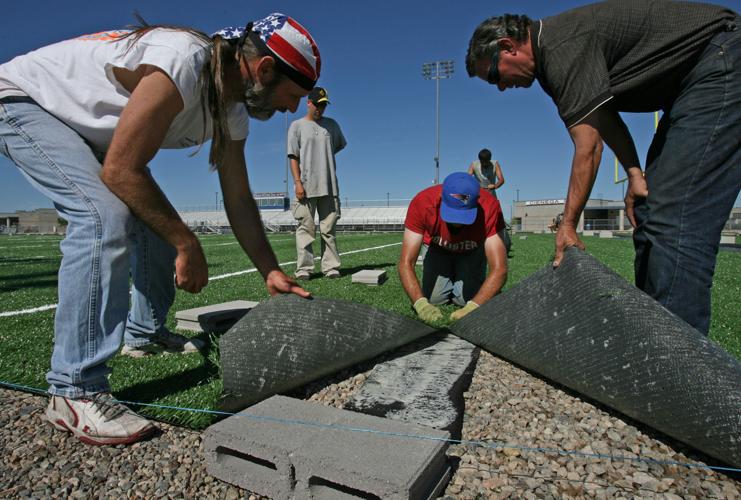Cienega High School’s artificial turf is aging, and its deteriorating conditions pose concerns for student and community safety, district officials say.
But the Vail School District is facing a dilemma: Replacing the football stadium turf would cost about $450,000. Administrators say that in these trying times for school finance, that amount is difficult to justify.
There has been a spike in injuries — though none of them were permanent — in the past 1½ years as a result of the turf’s poor conditions, said Nemer Hassey, Cienega’s principal. The turf was first installed in 2005; the district was told then it would probably last eight years.
Referees expressed concerns about the field’s playability to the Cienega administration, according to a memo sent to the district’s Governing Board. Students continue to play on the turf in the meantime.
If the district were to conduct an impact test on the turf now, it would be “pretty close to not passing on that,” Hassey said.
Artificial turf is like carpet, he said. The more it’s used, the thinner it gets. Over the past 11 years, the turf, which is also used by youth club teams and community members, has lost its cushion.
When the turf was first installed, the strands were measured at 2 inches, the memo said.
The strands are now 1 inch in length.
“It’s not a factor of surprise that it has to be replaced,” Hassey said.
But the high price tag of a replacement turf has district officials concerned.
The district could put in real grass, which would have a significantly cheaper up-front cost, but that would also mean spending an additional $30,000 or so annually to water the field. The district saved $278,000 in water costs by using artificial turf over the 11 years.
New grass turf would also mean Cienega would have to tear out its artificial turf infrastructure and install a sprinkler system.
“There is no questioning the need,” said Calvin Baker, the district’s superintendent. “The need is clearly identified and justified. It’s the finance part that’s causing angst.”
The district could pull about $250,000 from bond funds approved by voters in 2009 or $650,000 from developer contributions, he said. Or there is also the option of using some of the $100,000 available in a civic fund.
Part of the difficulty is a “perceptual one,” Baker said. It may appear to district taxpayers that while the district is struggling to put teachers in classrooms, it is spending hundreds of thousands of dollars on a football field.
But the district cannot use capital money, which is meant for construction, renovations, equipment or furniture, to raise teachers’ salaries or hire more instructors, he said.
“The reality is that what we really need is not to stop fixing our athletic facilities,” he said. “What we really need is sufficient money for operating schools, paying teachers and buying classroom supplies.”
What the capital money could be used for, if not for replacing Cienega’s aging turf, is upgrading classroom technology equipment, Baker said.
“We just have not been able to refresh our technology,” he said. “We have had insufficient budget capacity.”
Not replacing the turf, though, would come with consequences, said Hassey, the Cienega principal.
“In time, we’d probably have to limit its use,” he said.
And if an impact test reveals that the field could not be used for games like football, the district would have to move those Cienega events elsewhere.






